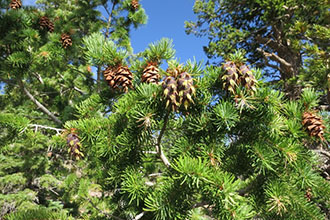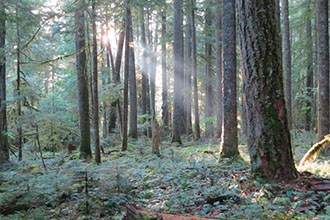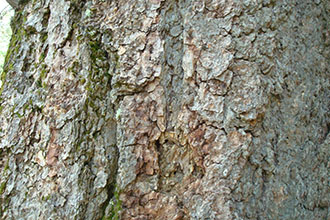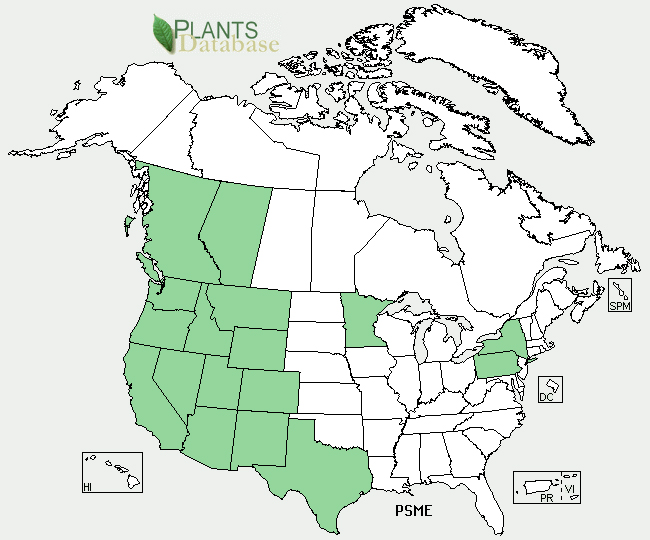Taxonomy: Kingdom - Plantae (plants). Subkingdom - Tracheobionta (vascular plants). Superdivision - Spermatophyta (seed plants). Division - Coniferophyta (conifers). Class - Pinopsida. Order - Pinales. Family - Pinaceae (pine). Genus - Pseudotsuga Carrière. Species - Pseudotsuga menziesii (Mirb.) Franco
Pseudotsuga menziesii has two widely recognized varieties: Pseudotsuga menziesii var. menziesii (Mirb.) Franco, coast Douglas-fir or the "green" variety, is found west of the Sierra Nevada and Cascade Mountains. Pseudotsuga menziesii var. glauca (Beissn.) Franco, Rocky Mountain Douglas-fir or the "blue" variety, is native to the Rocky Mountains and interior mountains of the Pacific Northwest.
Ecology: The latitudinal range of Douglas-fir is the greatest of any commercial conifer of western North America. Wherever Douglas-fir grows in mixture with other species, the proportion may vary greatly, depending on aspect, elevation, kind of soil, and the past history of an area, especially as it relates to fire. This is particularly true of the mixed conifer stands in the southern Rocky Mountains where Douglas-fir is associated with ponderosa pine, southwestern white pine (Pinus strobiformis), corkbark fir (Abies lasiocarpa var arizonica), white fir (Abies concolor), blue spruce (Picea pungens), Engelmann spruce (Picea engelmannii), and aspen (Populus tremuloides). Coast Douglas-fir is a major, long-lived seral dominant of low and middle elevation moist forests from southwestern British Columbia to northwestern California. In these forests it is shade intolerant and requires stand-destroying disturbance (wildfire, logging, extensive windthrow) to initiate a new cohort of seedlings. Rocky Mountain Douglas-fir is a shade-tolerant climax species in dry to moist lower and middle elevation forests but is relatively shade intolerant in wetter forests. In the absence of disturbance it tends to replace interior ponderosa pine, Rocky Mountain lodgepole pine, and western larch in the northern Rockies
Pseudotsuga menziesii is found in all three of the Western Forest Initiative 'big plots'. It is abundant in the Wind River Forest Dynamics Plot, and is the second most abundant species by basal area. It is uncommon in the Yosemite Forest Dynamics Plot, and all but one large individual were killed in the 2013 fire. In the Utah Forest Dynamics Plot, it is found in low abundance on north-facing slopes.



